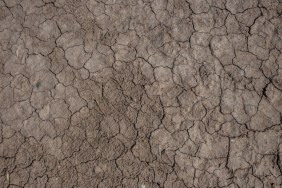During the warm summer months, the seemingly hidden rivers and lakes that fly fishermen fall in love with, even call their own, can become populated with canoes, tubes, and kayaks. While the water is open for everyone to enjoy in their own way, many fly fishermen will undoubtedly feel crowded and may even call it a day after a fleet of canoes floats through the best trout hole on the river. There’s no need to give up, however. While the sudden influx of water activity may disrupt a specific location, all one has to do is think smaller, where canoes and tubes won’t be able to go, to find new opportunities.
Small streams–less than a foot deep–are one alternative to popular rivers and are great for anglers looking to avoid the congestion of recreational floaters. Creeks snaking through fields, or small streams you could step across, and even suburban drainages, often times hold fish ranging from bluegill to bass and shouldn’t be overlooked, and are also too shallow or small for canoes. These small creeks offer new challenges, such as tighter quarters, the need to be more adept with shorter rods, and a more skilled approach each casting spot without scaring fish, and will test even the most experienced angler’s grit.
Farm ponds, and even city lakes, are other, oft-overlooked, locations that anglers who trout fish regularly may want to check out when yearning to take a day off from the river and shake the dust from their light tackle. It’s true, panfish aren’t steelhead, but there isn’t anything quite like the fight that a sizeable bluegill, or small bass, will provide on a three-right fly rod. It’s a simple fact that smaller fish are more fun on lighter tackle and downsizing to fish such locations that other anglers often pass by will be a very rewarding experience.
It doesn’t take learning a new technique or purchasing an entire range of new tackle to enjoy yourself in smaller waters. Most will be able to tie on a small popper, which will perform very well most of the time, but in the late summer, a grasshopper imitation will yield great results as well. Redears will predominantly feed in deeper water and sinking nymphs, when retrieved slow and steadily, will pull in big numbers all day.
While they may not be your first choice for a fly trip, these smaller alternatives may just be the best remedy for life’s everyday pressures. Most fly anglers dream of bonefish on the flats of the Keys, or casting to smallmouth on the boundary waters, and easily forget the simple freedom that can be found from a few hours at their local pond or tiny creek. Whether you’re an avid light tackle enthusiast or looking to try something new, new opportunities are often closer than we think. If nothing else, it will provide you with an excuse to purchase that ultra-light rig you’ve had your eye on.








